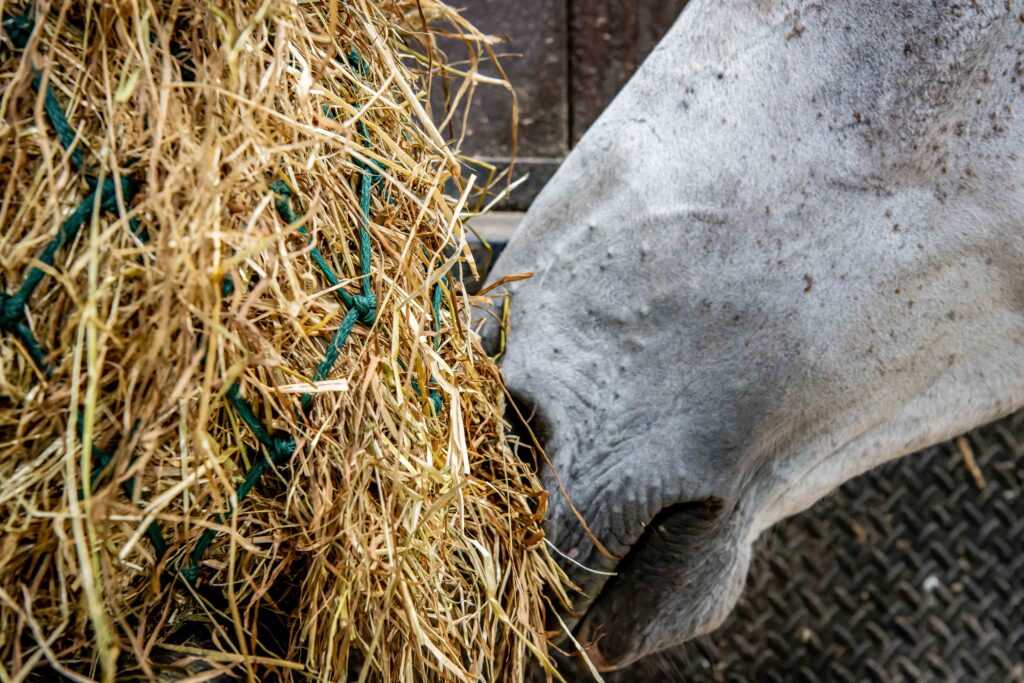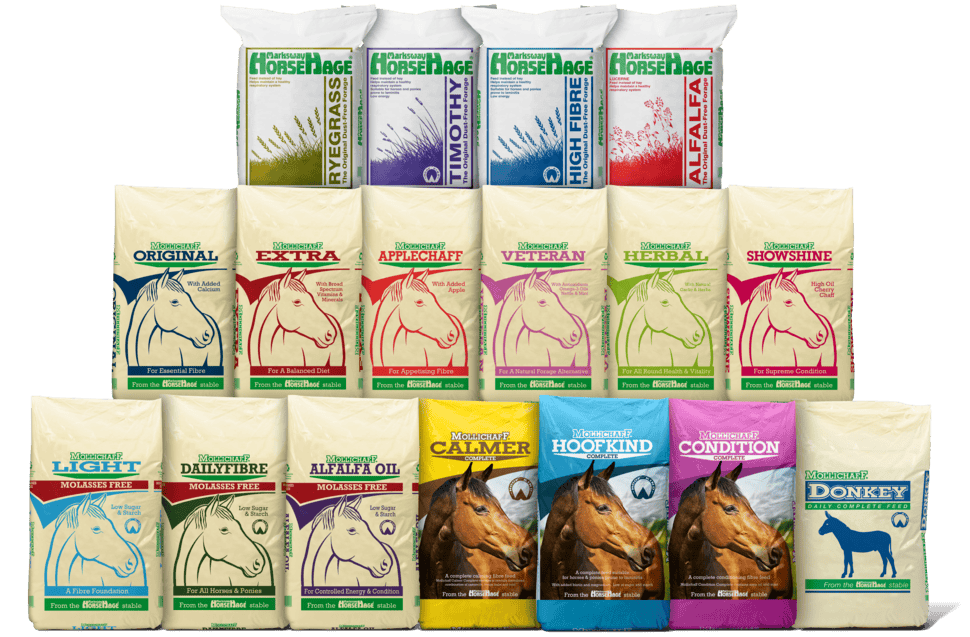
As you will be aware, any changes to your horse’s feed should be made gradually to avoid risking digestive upset or any other health risks. This blog runs through how to safely introduce HorseHage into your horse’s diet.
How to Introduce HorseHage into the Diet
So that your horse’s gut microflora can adjust, we suggest changing from hay to HorseHage over a period of at least 5-to-7 days by increasing the amount of HorseHage provided each day and reducing the amount of hay.
HorseHage has a higher feed value and is more digestible than hay, so we suggest assessing your horses’ or ponies’ whole diet as you may be able to reduce the hard feed being provided.
We recommend weighing HorseHage rather than judging quantities by eye. Scales are available at most horse feed retailers, although you can also use luggage scales.
You should feed your horse, as an absolute minimum, the same quantity of HorseHage by weight as you would feed hay.
Due to the differences in dry matter between hay and HorseHage, it’s important to ensure adequate levels of fibre are being provided.
HorseHage should form part of a balanced diet. Choose a broad spectrum vitamin and mineral supplement, complete feed or balancer suitable for your horse or pony to accompany your HorseHage.
When HorseHage is first introduced, you might find that your horse eats it much faster than it would eat hay; this is because of how much more palatable and moist it is.
This can concern some horse owners with the worry that their horse could be in the stable for long periods of time without anything to eat. In order to slow down how fast HorseHage is eaten, we recommend a small holed net.
Alternatively, you could try:
- Feeding little and often rather than all at once to stop them scoffing down all their feed in one go
- Trickle feeding haynets with very small access holes (however, this can become frustrating or stressful for some horses)
- Using hay balls which are great for adding enrichment and paddock entertainment as well as slowing down horses that eat too quickly
- Splitting feed into multiple haynets and placing them in different locations (this might become frustrating and lead to stress though)
- Keeping your horses preoccupied with additional enrichment
This issue is unlikely to persist as research shows that most horses will revert to their original eating speed after around 2 weeks.
For horses and ponies prone to laminitis, we recommend High Fibre HorseHage or Timothy HorseHage as this can be safely fed at controlled levels, where total calorie requirements allow, to maintain fibre levels and keep the gut moving. This is especially important when grazing may need to be restricted such as during the Spring and Autumn.
If calories are of a concern, HorseHage can be mixed with a lower calorie forage such as oat straw. The straw will need to be clean, of good quality and introduced slowly, ensuring that fresh water is always available.
How Long does HorseHage Last Opened?
Once opened, a bag of HorseHage should be used within 5-7 days, however, unopened bags can be kept for up to 18 months.
Although, any bags with holes in should only be used within 5-7 days of the hole being made.
How to store HorseHage
Unopened bales can be stored outside. Steps should be taken to ensure that packaging is not at risk of being punctured as this will cause the product to spoil. Storing HorseHage on a pallet can reduce the risk of stones and items on the ground tearing the packaging. Care must be taken to ensure that wildlife is also not able to make holes in the packaging.
Once you have opened your bale of HorseHage, remove all the packaging and keep in a cool dry area away from direct sunlight. Do not attempt to rewrap or reseal the bale as this may cause it to spoil quickly.
Looking For More Specialist Advice?
Our friendly and knowledgeable team is available on weekdays from 9am to 5pm.
Give us a call at 01803 527274 or send an email to sales@horsehage.co.uk


